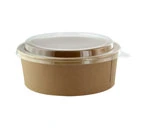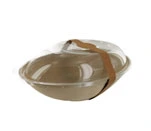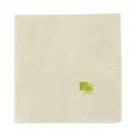Marathons Are Cleaning Up Their Act
Posted by Adam Merran on Oct 16th 2014
If you are a runner, it’s likely that at some point you will make it your goal to run a marathon. No matter where you live, if you are a runner in search of a race, there’s bound to be one nearby (for a complete list, go to http://www.marathonguide.com). From New York City to Las Vegas to Honolulu and Beirut, there are literally hundreds of marathons to choose from every year. And with that, more energy use, litter and waste than you can possibly conceive.
The New York City Marathon, one of the biggest races of all, is coming up on November 2. Now imagine this: 47,000 people running 26.2 miles through the 5 boroughs of NYC, quickly downing Gatorade and strewing cups, banana peels, and energy bar wrappers along the way. According the NYC officials, following the 2011 marathon, more than 95 tons of litter, 6.53 tons of paper, more than 1,500 pounds of metal, glass and plastic, and over 2 MILLION paper cups were left behind from that single event.
 While 3 or 4 years ago, it was questionable whether marathons can be green at all, marathons today are setting a new standard, adopting greener practices and making great efforts to reduce their environmental impact.
While 3 or 4 years ago, it was questionable whether marathons can be green at all, marathons today are setting a new standard, adopting greener practices and making great efforts to reduce their environmental impact.
Race organizers are finding earth-friendly ways to execute races from pre-race planning to post-race clean up. This includes working with caterers, vendors, suppliers, sponsors and expo exhibitors who are committed to reducing waste and emissions and who use only recyclable and compostable products.
One organization that is leading the way to encourage more sustainable approaches to marathons is The Council for Responsible Sport.
Founded in 2007, their vision is a “world where responsibly produced sports events are the norm.” Among other services, they have created a certification process whereby marathons adhere to specific guidelines, earn “credits,” and are publicly acknowledged for their green efforts.
The Austin Marathon has earned the Silver Certification Award 2 years in a row from the CRS – long recognized at one of the “greenest races in North America.” Known for the steps they take to reduce their environmental footprint and increase the social impact of the race, they even have a farmers market on-site and use recycled toilet paper in the porta potties.
Here are just a few of the many ways that marathons are reducing their environmental footprint:
- 100% paperless race registration
- Using solar-powered generators to provide electricity near the start and finish lines
- Switching to race apparel made from organic cotton, bamboo and other eco-friendly materials
- Providing recycling bins for cardboard, paper, plastic
- Using renewable energy sources at health & fitness expos and post-race parties
- Encouraging runners and spectators to use public transportation and carpools
- Supplying compostable water cups for runners and compostable coffee cups/lids for volunteers and spectators
- Using only biodegradable and compostable plates, cups and utensils at pre-and post-marathon meals
- Create Waste Free Zones at the start and finish where everything must be reusable or recyclable
- Enlisting clean up crews to divert race-related waste from going to landfills by recycling and composting
As runners, spectators, vendors, sponsors, suppliers, exhibitors and caterers, if we ALL commit to finding environmentally alternatives, responsibly produced marathons CAN and WILL be “the norm.”
 To see our complete collection of compostable cups, plates and utensils, go to http://www.packnwood.com/
To see our complete collection of compostable cups, plates and utensils, go to http://www.packnwood.com/


















































































































